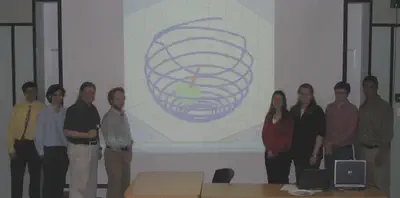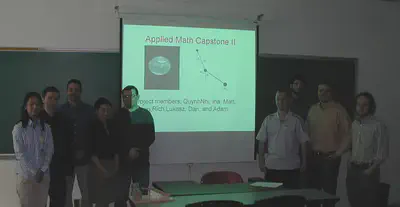2005-2006 Project
In a celebrated article in SIAM Review1, Diaconis, Holmes, and Montgomery show that under general conditions, a coin is inherently biased to land heads-up if it leaves the hand heads-up. This effect does not diminish as the coin is thrown higher or with more vigorous rotation and is not due to any asymmetry in the minted coin. This bias arises because the coin precesses as it tumbles, and is a straightforward, though novel, application of results due to Euler in about 1750.
This result formed the culminating experiment of a capstone course in applied mathematics at NJIT. The first few weeks of the course were spent teaching the relevant results from classical mechanics. Several warmup experiments were conducted using Capstone Laboratory equipment, ordinary digital cameras, and software from the Matlab Image Processing toolbox.
Our experiments:
- Experiment 1: Calculating the gravitational acceleration constant from a movie of a bouncing ball.
- Experiment 2: Feynman's Plate
- Experiment 3: The gyroscope with frictional damping (2005)
- Experiment 4: Chaos in the Double Pendulum (2006)
- Experiment 5: Dynamical Bias in the Coin Toss


Dynamical Bias in the Coin Toss Persi Diaconis, Susan Holmes, and Richard Montgomery SIAM Review 2007 49:2, 211-235 ↩︎